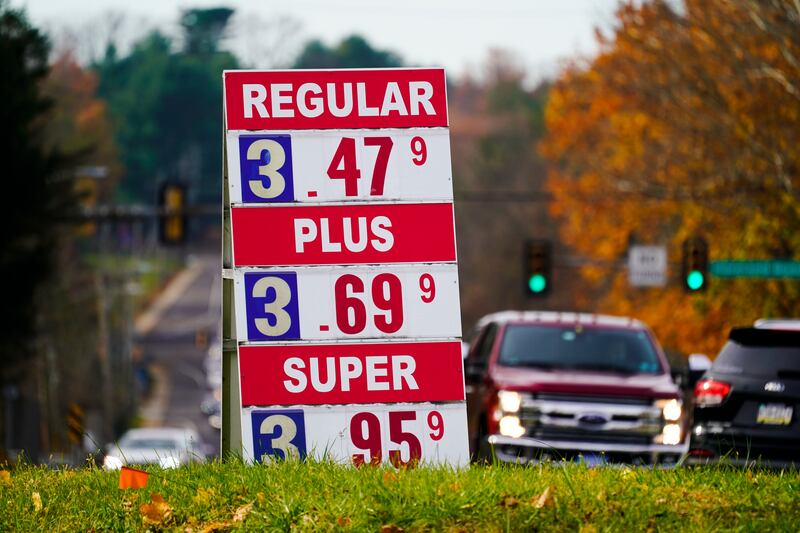Oil prices have made a strong start to the year. Opening December below $66 per barrel, Brent crude reached $75 by New Year and touched $89.50 on Thursday. $100 seems within sight and the ability of Opec+ to respond is crucial.
The International Energy Agency raised its demand forecasts for this year by nearly 200,000 barrels per day. Both the IEA and Opec grew more sanguine that the economic impact of the Omicron coronavirus variant would be limited.
Yet in December, production from group members bound by cuts grew 300,000 bpd, less than the planned 400,000 bpd increase. Overall output is now 650,000-790,000 bpd under the target. Most of the shortfall comes from Angola and Nigeria, the perennial laggards.
After a temporary gain in December, exports from Angola’s mature fields are expected to see a further decline of about 100,000 bpd by February. Nigeria also suffers from underinvestment and pandemic-related maintenance shortfalls, as well as endemic unrest, sabotage and theft from pipelines. Algeria was on target in December, but its capacity is slowly declining.
But as allocations steadily increase, more and more countries hit their practical ceilings. On the IEA’s figures, Kuwait will probably reach its maximum later this year, and Iraq will be nearing it.
The UAE foresaw this problem back in July, when it asked for its baseline production – from which cuts are calculated – to be raised to 3.8 million bpd from 3.168. The UAE Minister of Energy and Infrastructure, Suhail Al Mazrouei, revealed in June 2020 that the country’s capacity was 4.2 million bpd, and it will have increased since then as efforts continue towards a goal of 5 million bpd by 2030.
Eventually a compromise was reached, with the baseline set at 3.5 million bpd from this May, and other countries’ allowances also adjusted, notably Russia and Saudi Arabia, who were both awarded 11.5 million bpd. That will speed up production increases – but only for those countries who can deliver.
Russia, by far the dominant member of the non-Opec contingent, produced 9.95 million bpd in December, a little below its allowable level, and clearly far under its baseline. It seems to have mostly exhausted its spare capacity, the number of shut-in wells having fallen back to pre-pandemic levels. Additional production gains depend on drilling new wells, a slower process. Instead of restoring its allowed 100,000 bpd each month, the country may manage about 50,000-60,000 bpd.
Because of field maturity, production is declining in nearly all the smaller members, and this trend is unlikely to be reversed in the near term. Collectively the Republic of Congo, Gabon, Equatorial Guinea, Sudan, South Sudan, Azerbaijan, Malaysia, Bahrain and Brunei yielded 200,000 bpd lower in December than their allowable level from October.
The protests in Kazakhstan briefly affected January production, but the country is in fact the only one of the non-Opec adherents that has been producing significantly above target.
Opec+ also must account also for the vagaries of its three exempt members, Libya, Venezuela and Iran.
Libya lost about 400,000 bpd because of interruptions by the Petroleum Facilities Guard, an organisation better at disrupting the oil industry than protecting it. Lack of maintenance and collateral damage during fighting have caused repeated pipeline leaks and a lack of storage. Further political and military manoeuvring around the delayed elections threatens further shutdowns.
Venezuela has managed to boost output using imported Iranian condensate to dilute its heavy oil, but given the decaying infrastructure, this probably cannot be maintained without a radical rethink of sector management and an easing of US sanctions. Real output is still likely about 200,000 bpd below Caracas’s official communications.
Under more stringent American sanctions, Iran has still managed to boost exports to China, using a variety of guises. The current talks in Vienna on restoring the 2015 nuclear deal have shown recent signs of progress. A deal would take months to implement and the Iranians would then need some more months to return to full output, though they could offload stored cargoes soon. Still, Iran is the strongest candidate for adding major supply in the second half of this year, eventually up to about 1.4 million barrels per day.
Now, an outbreak of Omicron in China or another more serious variant worldwide could hit demand again. There could be a global economic downturn. A serious conflict over Ukraine would upset all calculations. But, on the current trajectory, usable spare capacity will soon be concentrated in Saudi Arabia, the UAE and some in Iraq.
If Opec+ continues increasing allowable production as planned each month, the Covid-related cuts should be phased out entirely around September, though the deal can run up to December.
If the supply-demand balance looks too tight before then, and prices rise above $100 per barrel, Opec+ would come under pressure to increase output more rapidly. But that would be diplomatically tricky, as it would need a formal agreement for Saudi Arabia and the UAE to produce more. Of course, targets for all members could be raised, but that would make the ceiling ever more theoretical.
Waiting until September avoids some hard conversations about new production levels. As the 2019 quotas already look outdated, there would have to be a general reshuffle. The countries with real, usable spare capacity have the upper hand in those discussions.
Robin M. Mills is CEO of Qamar Energy, and author of The Myth of the Oil Crisis






